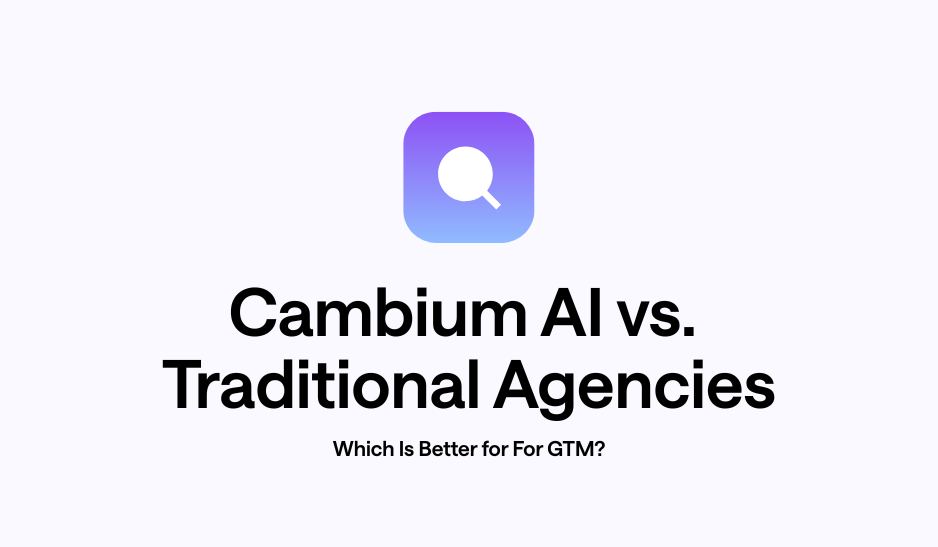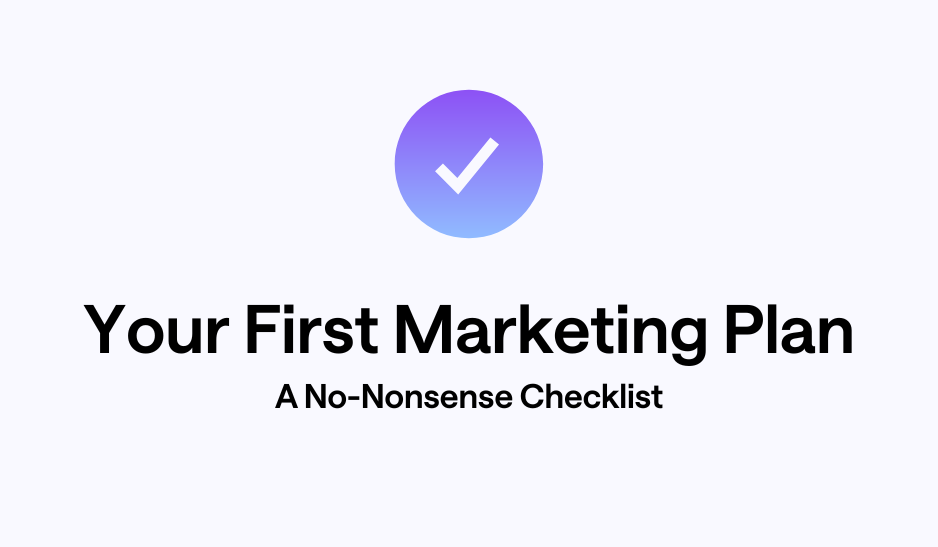How to Write a Business Plan in 2025
You’ve dedicated months to building a product. You solved a complex technical problem with an elegant solution that is demonstrably better than the alternatives. You are, first and foremost, a builder.
Then, the conversation shifts to fundraising, and a potential investor asks a simple question: “Can you send over the business plan?”
The request can feel jarring. You’re being pulled out of your comfort zone into the world of market research, financial forecasting, and brand strategy.
A modern business plan is a lean, strategic narrative. It’s a document that articulates your core hypothesis about a market and presents a clear, evidence-based story of how your technical innovation will capture it. This guide breaks down its essential components.
The Anatomy of a VC-Ready Business Plan
An effective plan is a focused document designed to answer a specific set of questions with precision and clarity. Each section should build on the last, making a logical and compelling case that your company represents a significant investment opportunity.
1. The Executive Summary: The 300-Word Distillation
This is not an introduction; it’s a compressed version of the entire plan. It is the single most important page. A VC associate reviews dozens of these documents weekly and makes a judgment call in under two minutes.
If a partner reads only this page, they must understand:
-
The Problem: A single, concise sentence defining the critical problem you solve.
-
The Solution: A clear description of your product and its core value.
-
The Market: The size of the opportunity, typically your Total Addressable Market (TAM).
-
Your Advantage: The unique technology, team insight, or data that makes your position defensible.
-
Traction: Key metrics (e.g., users, revenue, key partnerships) that validate your progress.
-
The Ask: How much capital you are raising and the key milestones you will achieve with it.
Investor Perspective: "Do I understand the business, the market, and the core thesis? Am I intrigued enough to continue reading?" Clarity is paramount.
.png?width=3200&height=2400&name=In%20Post%20Blog%20Images%20(39).png)
2. The Problem & The Opportunity: Why This, Why Now?
Founders are often passionate about their solutions. Investors, however, focus on the problem. You must demonstrate that you are addressing a significant and urgent need for a well-defined group of customers.
Frame the problem in quantifiable terms: measurable financial loss, critical operational bottlenecks, significant security risks, or wasted time. Avoid describing minor inconveniences.
Equally important is answering the “Why now?” question. What technological, cultural, or market shift makes your solution timely and necessary? Perhaps it’s the emergence of a new platform, a regulatory change, or a shift in user behavior. This context creates urgency and shows you understand the market's trajectory.
Investor Perspective: "Is this a 'nice-to-have' or a 'must-have' solution? Is there a clear market tailwind that supports this venture?"
3. The Market: Defining the Scale of the Opportunity
A great product needs a large market to support venture-scale growth. VCs look for companies with a credible path to generating substantial revenue. This is where you quantify that potential using three standard metrics:
-
TAM (Total Addressable Market): The total market demand for a product or service. This demonstrates the upper limit of the opportunity. Example: The global market for enterprise data security.
-
SAM (Serviceable Addressable Market): The segment of the TAM targeted by your products and services, which is within your geographical reach. This is your field of play. Example: The market for cloud data security for financial services companies in North America.
-
SOM (Serviceable Obtainable Market): The portion of your SAM that you can realistically capture in the first 3-5 years. This defines your initial target and grounds your strategy in reality. Example: Capturing 3% of the SAM within three years.
Build your market sizing from the bottom up (e.g., number of potential customers x average annual contract value). This is far more credible to investors than a top-down approach (e.g., “the market is $50B, and we will capture 1%”).
Investor Perspective: "Is the market large enough to support the required return on our investment? Is their initial go-to-market focused on a specific, winnable segment?"
4. The Go-to-Market (GTM) Strategy: The Plan for Customer Acquisition
Your GTM strategy is your operational playbook for reaching, acquiring, and retaining customers. For a technical founder, this is often the most challenging section to articulate, yet it’s a critical test of commercial viability. A vague statement like "we will use digital marketing" is insufficient.
A strong GTM plan specifies:
-
Ideal Customer Profile & Personas: Who are you selling to? Define the specific company attributes and the roles of the individuals you need to influence. What are their goals, challenges, and daily workflows?
-
Marketing & Sales Channels: Based on your customer profile, how will you reach them? Is your product best suited for a product-led growth (PLG) motion driven by content and self-service? Or does it require a direct, enterprise sales team? Be specific about the channels you will prioritize.
-
Pricing & Packaging: How will you monetize the product? Your pricing model (e.g., tiered SaaS, usage-based, license) must align with the value delivered and your customer's procurement process.
-
Early Traction Plan: Outline the tactical steps you will take to acquire your first 50-100 customers. This demonstrates your ability to execute.
Investor Perspective: "Is the GTM strategy aligned with the product, the price point, and the target customer? Are the underlying assumptions about customer acquisition cost and lifetime value realistic?"
5. The Team & The Financials: Execution Risk and Capital Allocation
For any early-stage company, the team is a primary consideration. Investors are betting on your ability to execute. Your plan must highlight your team's unique qualifications to solve this specific problem. Emphasize relevant domain expertise, past successes, and a deep understanding of the market you’re entering.
Your financial model is an exercise in articulating your assumptions. The projections are understood to be imprecise, but the logic behind them must be sound.
Your financial section should clearly present:
-
Key Assumptions: List the 3-5 core drivers of your model (e.g., user growth rate, conversion rate, average revenue per user, churn).
-
A 3-Year Forecast: A simple Profit & Loss (P&L) statement that shows your projected revenue growth and cost structure.
-
Use of Funds: Be specific about how you will allocate the capital you raise. For example: "60% for engineering hires to build X features, 30% for marketing to acquire Y customers, 10% for G&A."
Investor Perspective: "Does this team have the right experience and conviction to succeed? Do they understand the key financial drivers of their business? Is their plan for the capital both disciplined and ambitious?"
Your Plan is a Hypothesis
The most important thing to understand is that your business plan is not static. The moment it’s printed, the market has already moved.
Treat your plan as your core hypothesis. Your execution—shipping features, running campaigns, talking to customers—is the experiment designed to test that hypothesis. When you gather data that invalidates an assumption, you don't fail; you learn. You then update the plan to reflect your new, more accurate understanding of the market.
This agile approach demonstrates to investors that you are data-driven and adaptable, focused on building a durable business rather than defending a rigid document.
Your technical product is a work of logic and precision. Your business plan should be its strategic counterpart: a clear, compelling narrative that guides your decisions, aligns your team, and convinces investors to finance your vision.
Translating your technical vision into a business strategy is the next critical step. The GTM component is the heart of that strategy, and having a clear view of your customer and market is the essential starting point.
Use Cambium AI to generate your GTM plan and investor narrative for free today. Get started here.


